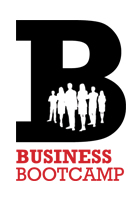 Yesterday I attended another of Kimberly Davies‘ Marketing Masters days. This time the topic was Effective Writing And Communications and featured guest speaker Steve Trister the creator of Performance Dynamite.
Yesterday I attended another of Kimberly Davies‘ Marketing Masters days. This time the topic was Effective Writing And Communications and featured guest speaker Steve Trister the creator of Performance Dynamite.
I not sure if Kimberly is a geographer at heart, but the four days I have attended have been located in south, east, north and now west London. I’m not sure where she will go next now we have covered all four compass points.
One of the consequences of moving to a new location each time, is that the rooms often have technical glitches with the sound or vision, or in yesterdays case, both.
Kimberly copes with these challenging starts to the day with an impressive level of professionalism and humour.
 Kimberly spoke for most of the day and was excellent, however the highlight of the day for me was actor and business coach Steve Trister the from Performance Dynamite..
Kimberly spoke for most of the day and was excellent, however the highlight of the day for me was actor and business coach Steve Trister the from Performance Dynamite..
He walked to front of the room wearing a doctors mask and mumbled something to. That got our attention. He then asked us to name the number one disease in business. We came up with a range of suggestions, but failed to give the correct answer; Vomiticus Contentinaatum – otherwise known as puking content, or verbal diarrhoea.
I have to admit that working in one of the largest libraries in the world with over 150 million items in our collection, this is a disease I am all too well aware of falling prey to.
The cure to this disease is to make an emotional connection with your audience (of one or more). This of course is much easier to say than to do. So you need to prepare, by building the right mindset.
You need to tell yourself every day that you are already connected to your audience, then you need to mentally rehearse by visualising the event in advance (some of which will be scripted, and some not). This is similar to the way professional athletes prepare for a competition.
You need to be clear on the emotion you want to conjure up, be in state (or in the moment with no distractions), and to commit 100% to the performance.
Steve had investigated the famous research by Albert Mehrabian on non-verbal communication. He found the commonly quoted result, that clues from spoken words, from the voice tone, and from the facial expression, contribute 7 %, 38 %, and 55 % respectively to the total meaning, is wrong, as it it relates only to the communication of positive versus negative emotions.
Our voice is critical to how we communicate to our audience, changes in vocal emphasis (the stress we put on specific words) can completely change the meaning of what we saying. He asked how often do we take note of how we are actually speaking. He explained that our tongues are muscles, so we should exercise them using tongue twisters.
He also covered body language and the use of gestures, and how these can be used to reinforce or undermine our verbal messages. He said we should practice expressing our business activity in the form of charades. This made my mind boggle at how I could show the British Library through mime.
Steve illustrated each of these points with victims (sorry volunteers) from the audience, and guided them through. For the final example he had a professional photographer give an excellent and clear mime of his business.
Finally he said we should find an emotional story that will relate to your audience.
Needless to say Steve used all of these techniques during one of the most engaging and memorable presentations I have ever seen.
You can see a YouTube video of Steve in action, and an interview with Smarta.com.
[youtube=http://www.youtube.com/watch?v=cPrZ2ElG-Yo]
Here are my notes from the rest of the excellent day:
Learn the 20 rules of communication that should never be broken
Kimberly’s no. 1 life lesson;
“You can reach anyone in the world with, seven phone calls or less, saying the right thing.”
Statistics show that 50% of marketing spend is wasted.
Led to the idea for Sarsaparilla – to detox your marketing – Marketing Purification
Definition of marketing
Anything that affects the perception of your company. From logos to staff behaviour.
You are exposed to 4,000 brands every day. So how does your business stand out?
Know your audience
– Who is your target market?
– Who is your idea client / decision maker?
– What motivates them?
– Profile (gender, age, health, wealth, culture, interests, position, salary, budget, etc)
Then put yourself into their shoes.
– How can you make their life easier?
– What is in it for them?
Then find your voice (written language).
– Who would narrate your content?
– Think of a character of personality best suited – perhaps Steven Fry for the British Library
– Who would your audience relate to and want to hear? Admire? Look up to? Believe
– Imagine their voice each time you create marketing content
Keywords
– Ten words that best describe your business – For the Business & IP Centre: innovation, inventions, information, support, advice, help, entrepreneurs, business-startup,
– One word that best describe your business – knowledge
Unique Selling Point
– What truly makes your business unique – For the Business & IP Centre: The largest free collection of free market research and business information in the world, with expert guidance.
USP
– You need to be the only…
Misconceptions
Testimonials
Focus on the benefits for your customers
– List them – information, advice, contacts, training
– What problem can you solve?
– How can you make their life easier? – a clearer view of what they need to do to start their business
Key Messages
– What are the three key things you want people to remember about your business?
o Business & IP Centre at the British Library at St Pancras central London
o Free workshops and advice
o Free access to market research and business information.
- Branding
- Professional photos
- KISS – Keep It Simple Stupid
- Formula for success and to avoid writers block
- Navigate
- Incentives
- Call to Action
- Ask questions – keep the dialogue going
- Relevance
- The Elevator Pitch
- The who, what, where, when and how of your business
I still think Sarsaparilla’s elevator pitch is the best I have come across;
50% of marketing is wasted. Sarsaparilla is a marketing consulting and training agency that specialises in marketing purification – the process of detoxing your marketing, protecting you from The Flash, Fluff, and Fakers, and helping you make more money with less.
 I received a lovely surprise tweet recently. ” Hi Neil! I had a one-to-one with you couple of years ago. Still implementing your advice – it was great!”
I received a lovely surprise tweet recently. ” Hi Neil! I had a one-to-one with you couple of years ago. Still implementing your advice – it was great!”














